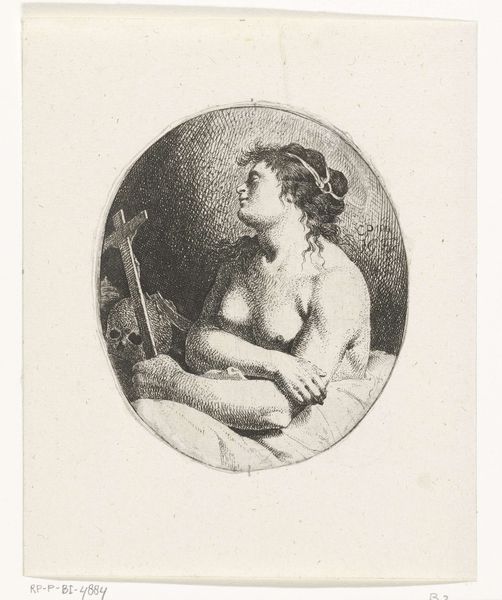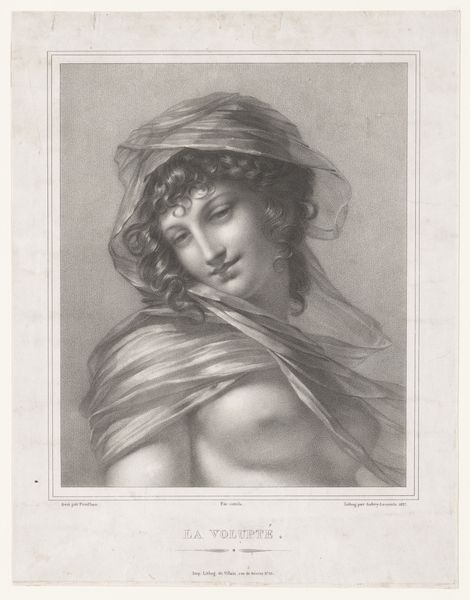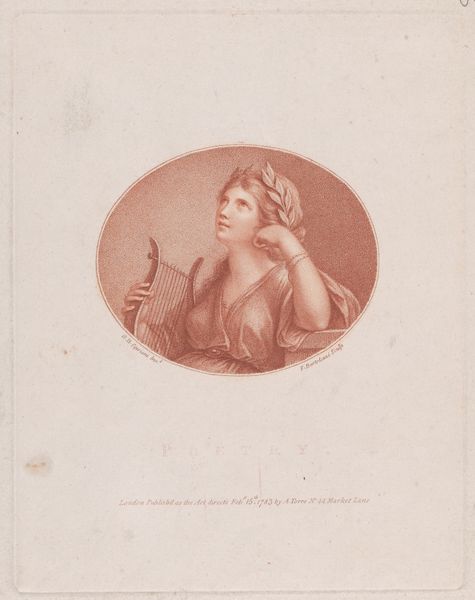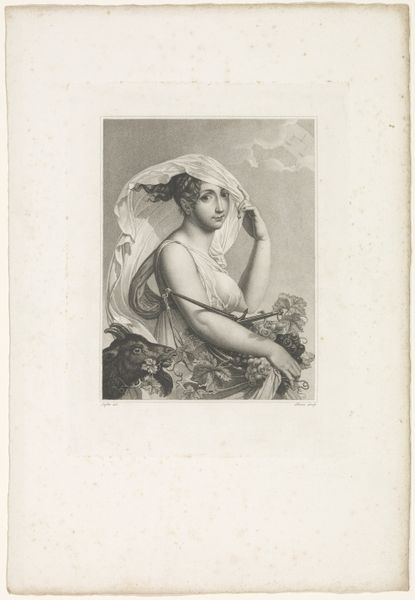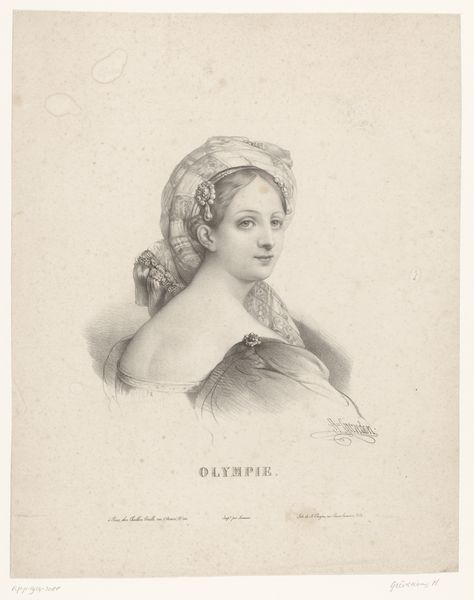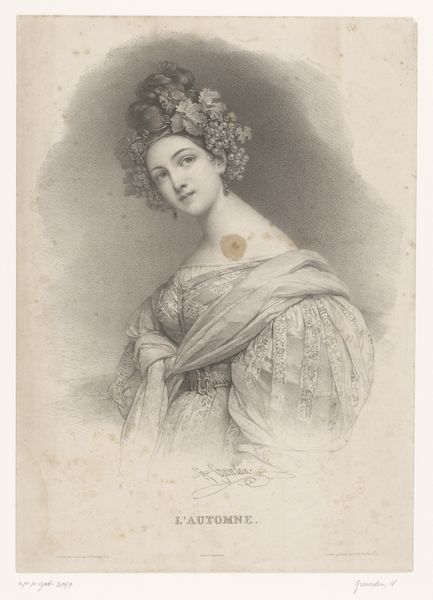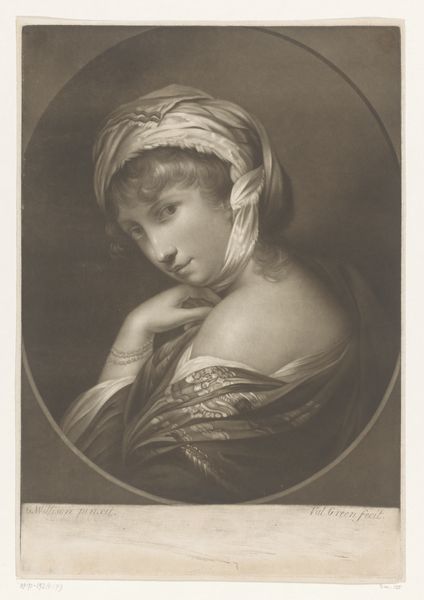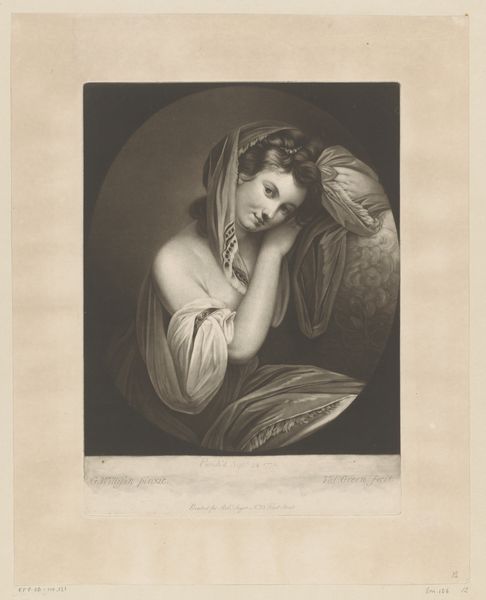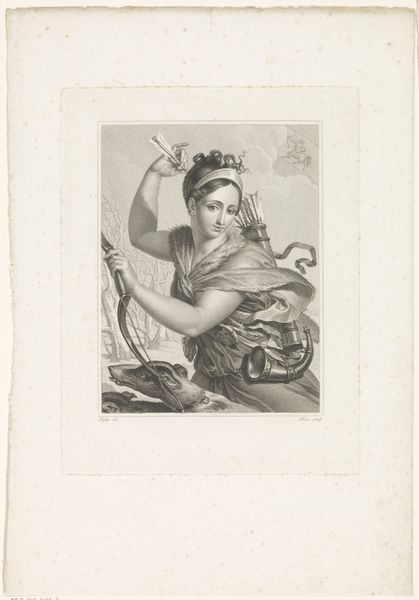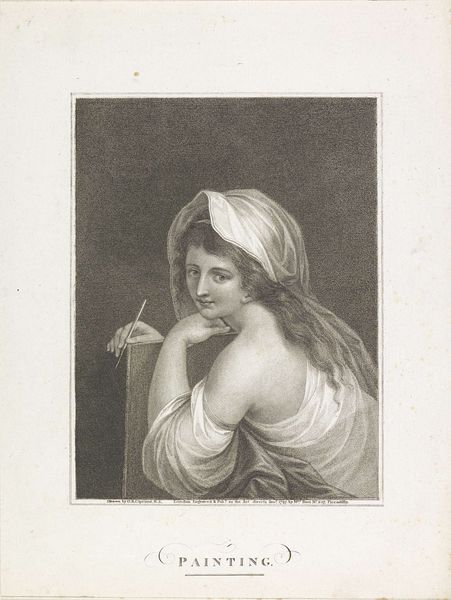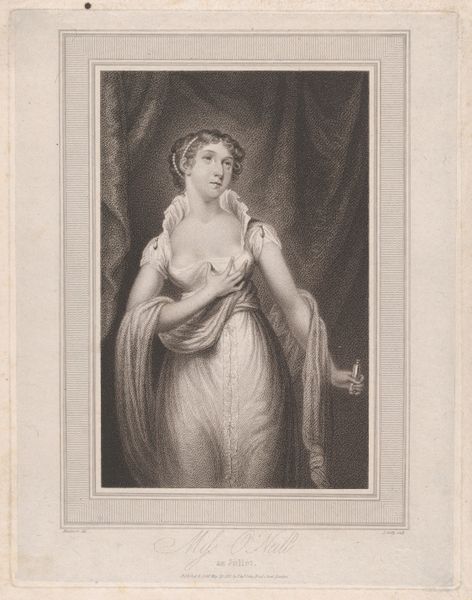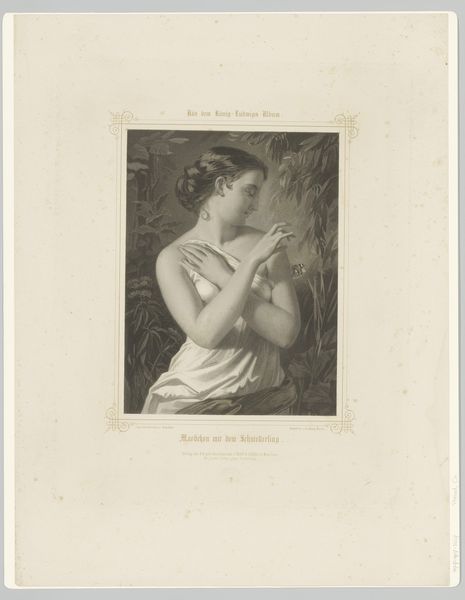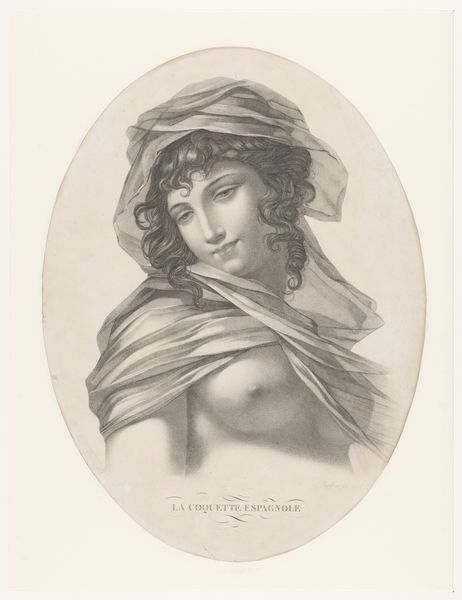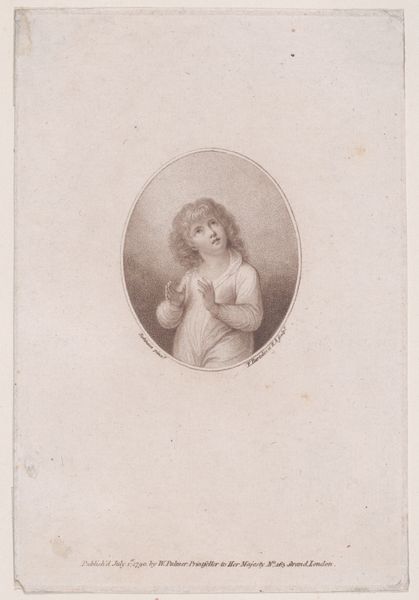
print, engraving
#
portrait
#
pencil drawn
#
neoclacissism
# print
#
landscape
#
figuration
#
form
#
19th century
#
line
#
history-painting
#
nude
#
engraving
Dimensions: height 275 mm, width 222 mm
Copyright: Rijks Museum: Open Domain
Editor: So, this print, "Arenleesster," thought to be from somewhere between 1792 and 1801, and made by Parfait Augrand. The use of engraving gives it such delicate detail. What strikes me is how it romanticizes labor. What's your take on it? Curator: It’s easy to be drawn in by the idealized aesthetic. But let’s push past that. Considering its context, the Neoclassical style during and after the French Revolution, the work highlights a very complex period of upheaval. Who is being represented, and who is conspicuously absent? What stories are not being told? Editor: I see your point. There's a glossing over of the realities of rural life, a selective focus. The figure seems almost…mythological. Curator: Exactly! Neoclassicism often did this, using historical and mythological imagery to project certain values, often linked to ideas of citizenship and the state. Consider the gaze of the figure: does it invite empathy, or project a removed sense of nobility? How does this portrayal function ideologically? Editor: It's less about real hardship and more about...projecting an image of idealized simplicity? So the romanticization, as I initially observed, distracts from engaging in a genuine social commentary. Curator: Precisely. It's crucial to analyze not just what is shown, but what's strategically left unseen or is subtly reinforced, revealing how art serves larger cultural and political narratives. This period aimed at rewriting history in its own way, shaping collective memory. What does that inspire you to research next about the piece? Editor: Well, I think I'll do a deeper dive into what the popular imagery and tropes were in post-revolutionary France, and explore some alternate, less state-approved, depictions of the era’s workers. Curator: An excellent starting point. I also feel empowered by looking at art using a broader, historical view!
Comments
No comments
Be the first to comment and join the conversation on the ultimate creative platform.
